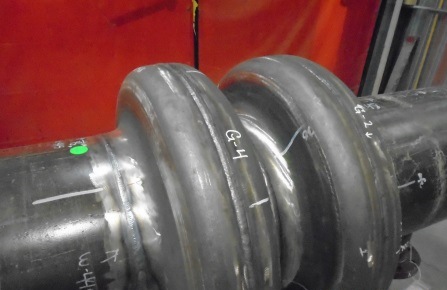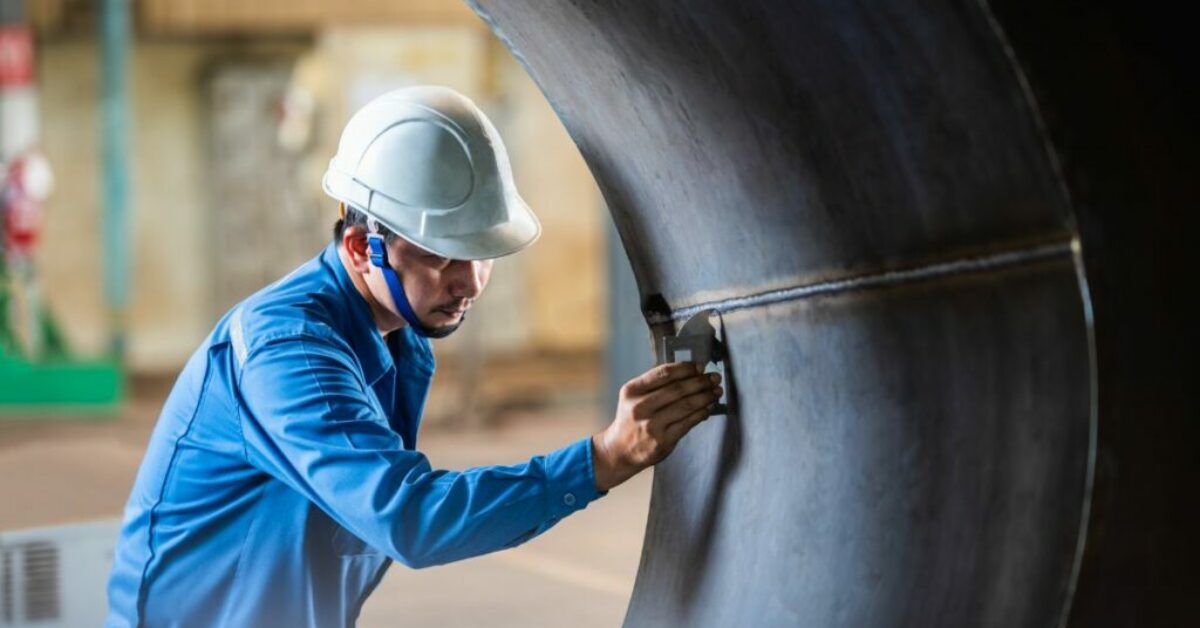The Relevance of Thorough Welding Assessment in Industrial Applications
In the realm of commercial applications, the value of careful welding examination can not be overemphasized. As we explore the complex advantages of thorough welding assessments, one should take into consideration the more comprehensive implications on safety and security, reliability, and cost-effectiveness in industrial operations.
Enhancing Architectural Honesty
When it comes to welding evaluation in industrial applications, improving structural stability is vital. The key objective of welding inspection is to ensure that the welds can bearing the expected anxieties and tons they will experience in service. This involves a detailed analysis of the welds' measurements, alignment, and total top quality, guaranteeing they satisfy the specified codes and requirements. Accurate evaluation methods, such as visual inspection, ultrasonic screening, and radiographic screening, are critical in recognizing problems that might jeopardize the structure's safety and functionality - Welding Inspection Madison.
The importance of keeping structural stability in welded structures can not be overstated. Poorly executed welds can lead to disastrous failings, causing costly repairs, downtime, and even endangerment of human lives. Therefore, inspectors play a crucial role in the lifecycle of industrial components, giving assurance that the welding procedure provides the wanted stamina and resilience.
Moreover, advanced modern technologies, such as phased range ultrasonic screening and electronic radiography, offer improved capacities in spotting prospective weak points, allowing for restorative actions before issues rise. By focusing on the integrity of welds with meticulous evaluation, markets can make certain operational efficiency and prolong the long life of their infrastructure.
Recognizing Welding Issues
Recognizing welding issues is a critical facet of making certain the safety and security and integrity of bonded structures. Common welding defects include porosity, splits, insufficient combination, and undercutting.

Knowledgeable inspectors use both aesthetic examination and advanced non-destructive testing (NDT) techniques, such as radiographic or ultrasonic testing, to spot these flaws. The prompt identification and rectification of welding problems are imperative to maintain the structural stability and long life of commercial components.
Guaranteeing Conformity Requirements
Conformity with well-known criteria, such as those supplied by the American Welding Culture (AWS) and the International Organization for Standardization (ISO), ensures that welds fulfill minimum safety and security and high quality needs. These criteria include a broad range of standards, including material requirements, welding procedures, and qualification of welders.
Regular audits and examinations are vital in verifying conformity. Inspectors need to have a detailed understanding of the relevant requirements and be adept at utilizing numerous non-destructive testing (NDT) approaches to assess weld top quality. By ensuring that welding methods align with compliance criteria, companies alleviate the risk of non-conformity, which can result in lawful liabilities and security threats.
Moreover, preserving conformity not just safeguards structural integrity but likewise boosts a firm's credibility in the market. Customers and stakeholders are more probable to trust fund companies that consistently demonstrate a dedication to top quality and safety through extensive conformity. Thus, guaranteeing compliance requirements is a critical component in the successful application of welding in industrial applications.
Minimizing Upkeep Prices

The application of innovative non-destructive testing (NDT) approaches, including ultrasonic, radiographic, and magnetic particle evaluations, boosts the capability to identify subsurface imperfections without jeopardizing the architectural integrity of parts. By employing these strategies, industries can significantly prolong the service life of their tools, minimizing downtime and the associated monetary burden of maintenance tasks.
Additionally, a durable welding evaluation regimen supports the optimization of upkeep timetables, shifting from responsive to anticipating maintenance methods. This proactive technique not just reduces unanticipated failures however additionally streamlines resource allotment, guaranteeing that upkeep initiatives are focused and effective. Eventually, the financial investment in strenuous welding evaluation is balanced out by the significant savings realized with lowered upkeep needs, contributing positively to the general functional performance of commercial ventures.
Improving Precaution
Welding examination plays a critical duty in this context, as it makes certain that all joints and connections fulfill rigid security criteria. Comprehensive examinations aid determine problems such as cracks, porosity, or insufficient combination that could endanger architectural integrity.
To boost precaution, adopting innovative non-destructive screening (NDT) techniques is essential. Techniques like ultrasonic testing, radiographic screening, and magnetic bit evaluation permit thorough evaluation without harming the structure. These modern technologies allow inspectors to detect concealed defects early in the building and construction process, facilitating timely corrective actions. Furthermore, carrying out a robust high quality control system that consists of routine training for assessors and welders makes sure adherence to established security standards.
Lastly, fostering a culture of security within the company stresses the relevance of extensive welding examinations. Urging open interaction and collaboration among welders, designers, and assessors adds to a common dedication to security quality. Welding Inspection Madison. In doing so, sectors can find more information guard their procedures, shield employees, and keep public depend on

Conclusion
Comprehensive welding examination is important in commercial applications, substantially boosting structural honesty and reliability. Eventually, the diligent execution of welding examinations plays a vital role in keeping operational effectiveness and safety in industrial setups.
As we explore the diverse benefits of thorough welding inspections, one need to take into consideration the broader effects on security, dependability, and cost-effectiveness in commercial procedures.
The primary goal of welding assessment is to make certain that the welds are capable of bearing the expected tensions and tons they will certainly encounter in service. Efficient welding assessment plays an essential function in lessening these prices by making sure the honesty and longevity of welds, thus alleviating the threat of early failures.Extensive welding examination is essential in industrial applications, substantially boosting structural integrity and dependability. Eventually, the attentive execution of welding assessments plays an essential function in keeping functional efficiency and security in Check This Out commercial settings.